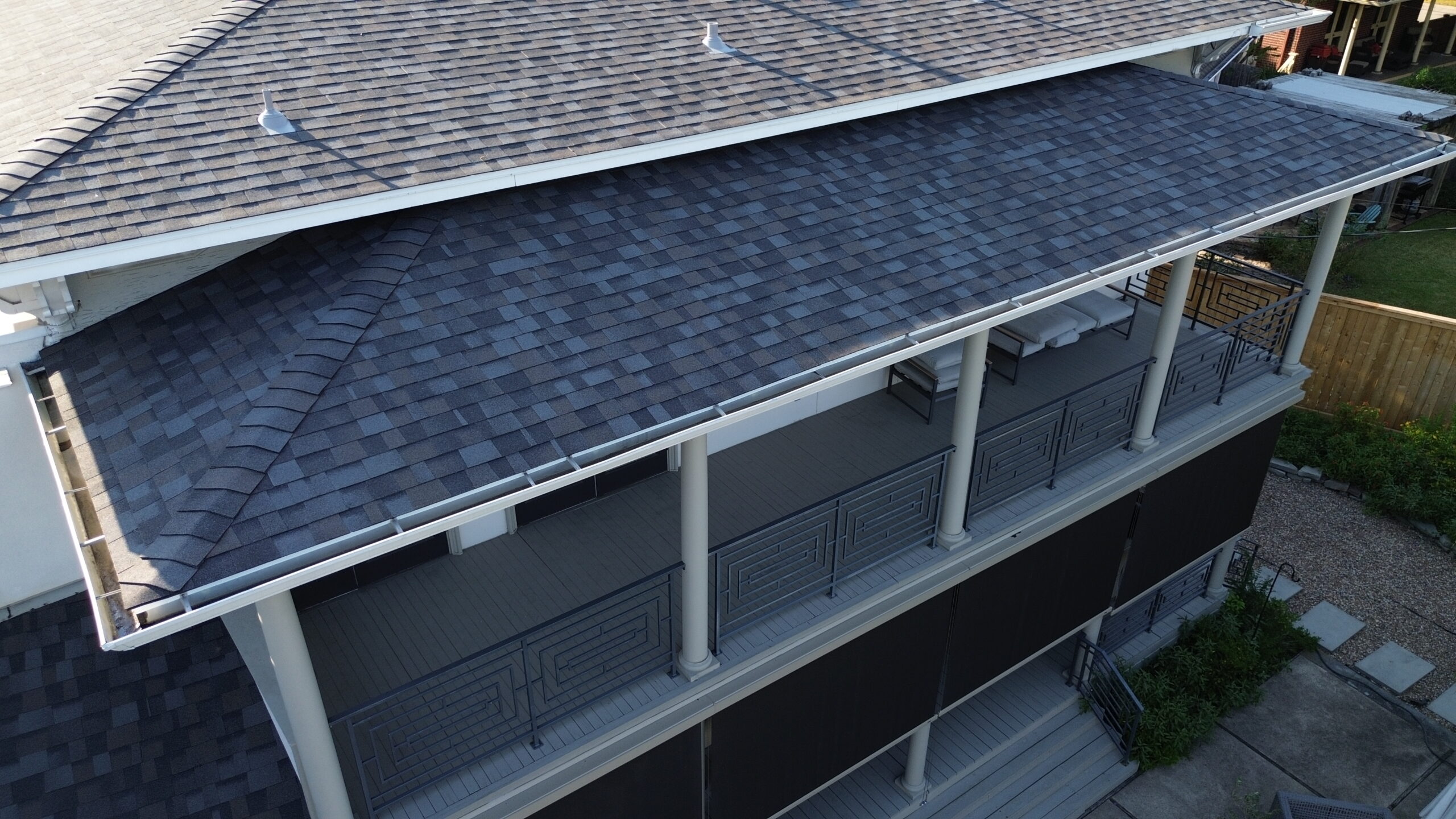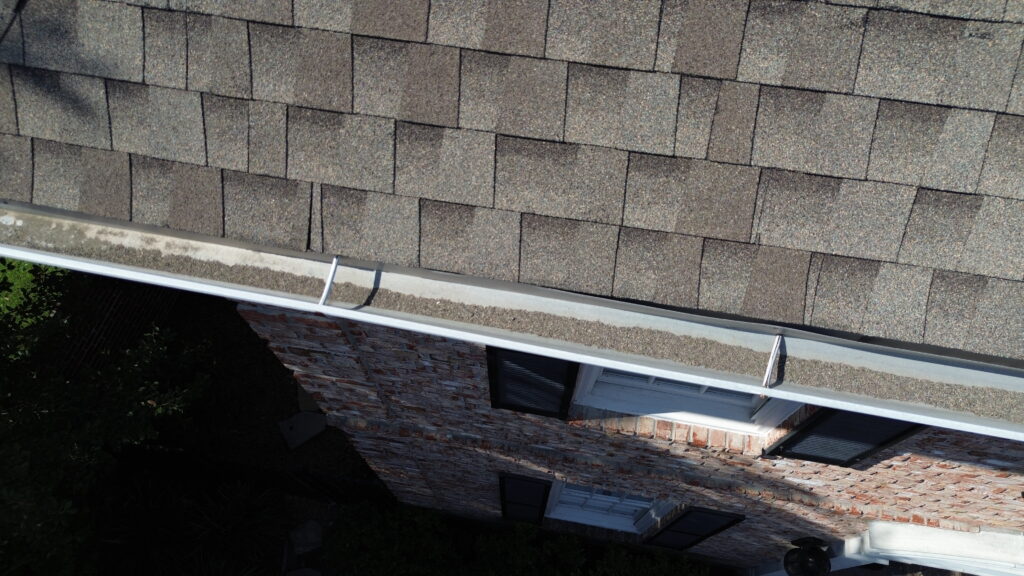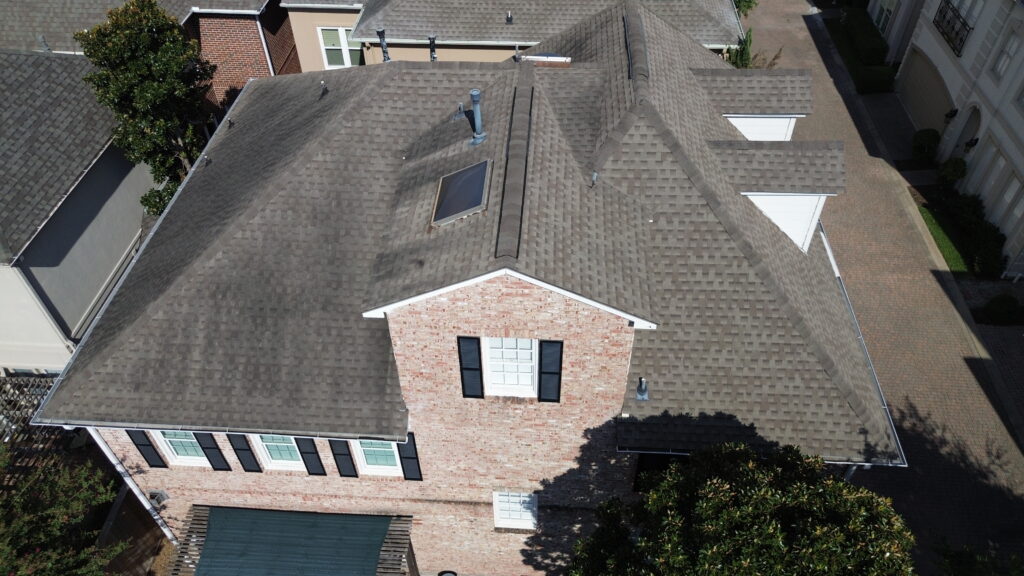
Most homeowners focus on visible roof components, such as shingles and gutters, but the hidden component of roof longevity lies in your attic’s ventilation system. Inadequate airflow in the attic can silently cause serious issues, including moisture buildup, mold growth, warped decking, and premature shingle failure. In fact, professional roofers frequently cite poor ventilation as a leading contributor to early roof failure.
Understanding how proper airflow protects your roof can help you avoid thousands in future repair costs. In this blog, we’ll break down why roof attic ventilation is essential, how it functions, and how it can significantly extend the life of your roofing system. You’ll also learn key areas for improvement for maximum efficiency and protection. Let’s get straight into it!
What Is Attic Ventilation?
Attic ventilation refers to the systematic circulation of air through your attic space using strategically placed intake and exhaust vents. This engineered airflow system prevents moisture accumulation and temperature extremes that can damage roofing materials and structural components.
The ventilation process operates on the stack effect principle, where cooler air enters through soffit vents at the roof’s perimeter and warmer air exits through ridge vents or other exhaust points at higher elevations. This continuous air movement creates a balanced system that maintains optimal attic conditions regardless of external weather patterns.
Professional ventilation systems incorporate various vent types, including ridge vents, soffit vents, gable vents, and powered exhaust fans. Each component serves specific functions within the overall airflow strategy. Ridge vents provide continuous exhaust along the roof peak, while soffit vents ensure adequate intake at the eaves. Gable vents facilitate cross-ventilation in certain architectural configurations.
Modern building codes mandate specific roof ventilation requirements based on attic square footage and climate considerations. The International Residential Code requires a minimum of 1 square foot of ventilation for every 300 square feet of attic space, with proper distribution between intake and exhaust vents. Many roofing professionals recommend exceeding these minimum standards for optimal performance.
The Key Benefits of Proper Attic Ventilation for Your Roof’s Health
Temperature Regulation and Shingle Protection
Excessive attic heat during summer months can reach temperatures exceeding 150°F, causing asphalt shingles to deteriorate rapidly. Proper ventilation maintains attic temperatures closer to ambient outdoor conditions, significantly extending shingle lifespan. This temperature control prevents granule loss, thermal cycling damage, and premature aging of roofing materials.
Heat buildup also affects roof decking, causing wood expansion and contraction that can lead to warping, splitting, and nail backing. Adequate airflow prevents these thermal stresses, maintaining structural integrity and preventing costly deck replacement during future roof replacement projects.
Moisture Control and Mold Prevention
Moisture infiltration is a serious threat to roof structures, especially in humid climates or during winter, when warm indoor air meets cold roof surfaces. Without proper ventilation, this can lead to condensation, mold growth, wood rot, and reduced insulation performance. A well-designed ventilation system prevents these issues by continuously removing excess humidity and promoting air circulation.
Ice Dam Prevention
Ice dams form when inadequate ventilation allows heat to escape through the roof surface, melting snow that refreezes at the roof edge. These ice formations can cause significant water damage by forcing melted water under shingles and into the building envelope.
Proper roof attic ventilation maintains consistent roof surface temperatures, preventing the freeze-thaw cycles that create ice dams. This protection is particularly crucial in northern climates where ice dam damage represents a major roofing concern.
Energy Efficiency Optimization
Effective attic ventilation is essential for optimizing energy efficiency throughout the year. In summer, it reduces heat buildup in the attic, limiting thermal transfer to conditioned spaces and decreasing air conditioning loads by up to 10% during peak periods. In winter, it helps regulate attic temperatures and prevents the escape of warm air through the roof, preserving insulation performance and reducing heating demands. This balanced approach not only improves indoor comfort and lowers energy consumption but also safeguards the longevity and structural integrity of the roofing system.
Common Signs of Poor Attic Ventilation
Interior Warning Signs
Elevated indoor humidity levels often indicate inadequate roof attic ventilation, particularly when combined with visible condensation on windows or walls. Homeowners may notice musty odors, particularly in upper floors or areas directly below the attic space.
Temperature inconsistencies between floors can signal ventilation problems, with upper levels remaining uncomfortably warm despite adequate air conditioning. These symptoms suggest trapped heat in the attic space, affecting living areas below.
Attic-Specific Indicators
Signs of poor attic ventilation often appear within the attic space itself. Visible moisture, frost buildup, or water stains on wood surfaces clearly signal insufficient airflow. Insulation that is damp, compressed, or discolored points to persistent moisture issues that demand immediate corrective action. Additionally, rust on metal fasteners, brackets, or electrical components indicates prolonged exposure to high humidity levels, conditions that can jeopardize both structural integrity and electrical safety if not promptly addressed.
Roof Surface Symptoms
On the exterior, roof ventilation issues often reveal themselves through irregular snow melt patterns, highlighting inconsistent attic temperatures. The presence of ice dams along roof edges is a definitive warning sign and should prompt a professional inspection. Premature shingle wear, such as curling, cracking, or excessive granule loss, can also result from poor ventilation, as repeated thermal cycling accelerates material degradation and shortens the lifespan of the roofing system.
How to Improve Attic Ventilation
Professional Assessment and Planning
Effective ventilation improvement begins with a comprehensive attic evaluation by qualified roofing professionals. This assessment identifies current ventilation capacity, airflow patterns, and specific deficiencies requiring correction.
Professional calculations determine appropriate vent placement, sizing, and types based on attic configuration, roof design, and local climate conditions. This scientific approach ensures optimal performance while maintaining architectural integrity.
Intake Ventilation Enhancement
Soffit vent installation or upgrade provides essential intake airflow at the roof perimeter. These vents should remain unobstructed by insulation or debris to maintain proper air circulation throughout the attic space.
Continuous soffit vents offer superior performance compared to individual vent units, providing consistent airflow along the entire roof edge. Professional installation ensures proper sizing and placement for maximum effectiveness.
Exhaust Ventilation Solutions
Ridge vent installation creates continuous exhaust along the roof peak, working in conjunction with soffit vents to establish optimal airflow patterns. These vents integrate seamlessly with most roofing systems while providing superior performance.
Powered exhaust fans may be necessary in certain configurations where natural ventilation proves insufficient. These systems require proper electrical connections and must be integrated carefully to avoid interference with existing roof materials, particularly during upgrades like asphalt shingle repair.
Maintenance and Optimization
Regular inspection and maintenance preserve the roof ventilation system’s effectiveness over time. This includes clearing debris from vents, checking for insulation blockages, and ensuring proper airflow throughout the system.
Professional maintenance programs identify potential problems before they cause significant damage, protecting both ventilation systems and roof structures through proactive care. The importance of regular roof inspections and maintenance extends beyond just ventilation; it encompasses the entire roofing system’s health.
Protecting Your Investment Through Proper Ventilation
Now that you understand how inadequate attic ventilation can silently compromise your roof’s health, it’s crucial to take proactive steps to protect your home and your investment. If you’ve noticed signs like excessive attic heat, mold, moisture stains, or premature shingle wear—or even if you simply want peace of mind, it’s time to schedule a professional ventilation assessment.
At TridentPro Construction, we bring years of hands-on experience in roofing solutions, proudly serving homeowners with expert care and attention to detail. Our comprehensive roof assessments for residential and commercial roofing evaluate key areas such as attic airflow, insulation, asphalt shingle condition, structural integrity, and compliance with current ventilation standards. We don’t just inspect, we provide tailored recommendations and high-quality solutions designed to extend the life of your roof and improve your home’s overall energy efficiency.
Trust our licensed professionals to help you maintain a strong, reliable roofing system. Book your ventilation inspection today at (+1) 832-880-6099 or email us at customerservice@tridentproconstruction.com




